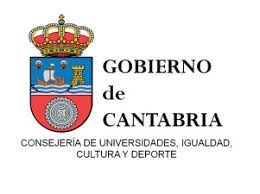Cervantes, accountant of empires: Looting, credit and profit in La española inglesa
DOI:
https://doi.org/10.55422/bbmp.919Keywords:
Empire, Raid, Credit, Merchant, Banker, Trade pepper, foreigner, Financial Instruments, Tomás de Mercado, Cervantes, La española inglesa, Novelas ejemplaresAbstract
The binary of arms and letters often overshadows another dimension of Cervantes’s life and oeuvre: his acumen in business and finance. In the early 1600s, his sister Andrea, described him before the courts as a man of great literary aptitude with a matching skill for nurturing personal ties and spotting financial opportunities. Although his aspirations to secure prominent roles in the Indies remained unfulfilled, Cervantes displayed such human and financial talents in his challenging experiences as a provision commissioner (1587-1594) and royal tax collector (1594). These ventures imprinted an economic dimension in his literary works that remains largely overlooked. This study seeks to uncover this layer, with a specific focus on the portrayal of credit mechanisms in the short novel, “La española inglesa.”
Downloads
Publication Facts
Reviewer profiles N/A
Author statements
Indexed in
- Academic society
- Sociedad Menéndez Pelayo
- Publisher
- Sociedad Menéndez Pelayo
Global Statistics ℹ️
|
407
Views
|
270
Downloads
|
|
677
Total
|
|
References
ABREU, Fray Pedro de. (1866). «Historia del saqueo de Cádiz por los ingleses en 1596». Revista médica.
ALEXANDER, Samson. (2019) «Cervantes Upending Ribadeneira: Elizabeth I and the Reformation in Early Modern Spain». The Image of Elizabeth I in Early Modern Spain. Eds. Eduardo Olid Guerrero y Esther Fernández. University of Nebraska Press.
ALONSO CORTÉS, Narciso. (1947-48). «Tres amigos de Cervantes». Boletín de la Real Academia Española. 27. 143-175.
ÁLVAREZ NOGAL, Carlos (2005). «Las compañías bancarias genovesas en Madrid a comienzos del siglo XVII». Hispania. 219. 67–90. DOI: https://doi.org/10.3989/hispania.2005.v65.i219.155
ASENSIO Y TOLEDO, José María. (1864). Nuevos documentos para ilustrar la vida de Miguel de Cervantes Saavedra; con algunas observaciones y artículos sobre la vida y obras del mismo autor. Sevilla.
ASTRANA MARÍN, Luis. (1948-56) Vida ejemplar y heroica de Miguel de Cervantes Saavedra. 7 vols. Madrid. Reus.
ASTRANA MARÍN, Luis. (1948 [2023]). Vida ejemplar y heroica de Miguel de Cervantes Saavedra. Vol. 1. Biblioteca Virtual Universal. https://biblioteca.org.ar/libros/89186.pdf
BALESTRINO, Graciela. (2006). «Las alegres, avisadas y lectoras: El Quijote en «El vizcaíno fingido»». El Quijote en Buenos Aires. Alicia Panodi, Julia Donofrío y Juan Diego Vila (coord.). Buenos Aires. Instituto de Filología y Literaturas Hispánicas «Dr. Amado Alonso». 833-40.
BATAILLON, Marcel. (1966). Erasmo y España: Estudios sobre la historia espiritual del siglo XVI. Trans. Antonio Alatorre. Ciudad de México. Fondo de Cultura Económica.
BERNAL RODRÍGUEZ, Antonio. (Ed.) (2000). «Dinero, moneda y crédito en la monarquía hispánica». Actas del Simposio Internacional Dinero, Moneda y Crédito: de la Monarquía Hispánica a la Integración Monetaria Europea. 4-7 mayo 1999. Madrid. Marcial Pons.
BOYAJIAN, James C. (1993). Portuguese Trade in Asia under the Habsburgs 1580-1640. Baltimore and London. John Hopkins UP.
BRAUDEL, Fernand. (1992). Civilization and Capitalism, 15th-18th Century. Vol. II: The Wheels of Commerce. Berkeley. University of California Press.
BREWER, Brian. (2013). «Jealousy and Usury in «El celoso extremeño»». Cervantes Journal. 33.2. 11-43. DOI: https://doi.org/10.1353/cer.2013.0002
CABRERA DE CÓRDOBA, Luis (1619 [1877]). Felipe II. 4 vols. Vol. 4. Madrid. Duque de Osuna.
CASTRO, Américo. (1972). El pensamiento de Cervantes. Barcelona. Noguer.
CRAILSHEIM, Eberhard. (2016). The Spanish Connection. French and Flemish Merchant Networks in Seville (1570-1650). Cologne. Bohlau Verlag. DOI: https://doi.org/10.26530/OAPEN_620578
CRESSY, David. (2022). Shipwrecks and the Bounty of the Sea. Oxford, UK. Oxford University Press.
CANAVAGGIO, Jean. (1986). Cervantes. New York & London. Norton.
CANAVAGGIO, Jean. (1997). «Aproximación al Proceso Ezpeleta». Perspectivas en los estudios cervantinos. Homenaje a José María Casasayas. Cervantes Journal. 17. 1. 25-45. DOI: https://doi.org/10.3138/Cervantes.17.1.025
CASALDUERO, Joaquín (1969). Sentido y forma de las «Novelas ejemplares». 2nd ed. Madrid.
CERVANTES, Miguel de (1986). La española inglesa. Novelas ejemplares. Ed. Juan Bautista Avalle-Arce. 3rd ed. 3 vols. Madrid. Castalia, 2. 45-100.
CERVANTES, Miguel de. «Carta en relación a un finiquito de cuentas entre Miguel de Cervantes Saavedra y Tomás Gutiérrez». Nuevos Documentos. Ed. J. M. Asensio y Toledo. 8–11.
CLAMURRO, William. (2017). Reading their Lessons from His Time to Ours. Blue Ridge Summit, PA. Lexington.
COLLINS, Marsha. (1996). «Transgression and Transfiguration in Cervantes's La española inglesa». Cervantes Journal 16. 1. 54-73. DOI: https://doi.org/10.3138/Cervantes.16.1.054
CRESSY, David. (2022). Shipwrecks and the Bounty of the Sea. Oxford, UK. Oxford University Press. DOI: https://doi.org/10.1093/oso/9780192863393.001.0001
CURTIS, Perry. (1997). The Making of Jacobean Culture: James I and the Renegotiation of
Elizabethan Literary Practice. Kiribati. Cambridge University Press.
DOMÍNGUEZ MARTÍNEZ, José M. (2016) «El Quijote y los tributos: la fiscalidad en la época de Cervantes». EXtoikos. 20. 43-46.
DOMÍNGUEZ ORTIZ, Antonio (1996). Los extranjeros en la vida española durante el siglo XVII y otros artículos. Sevilla. Diputación.
FERNÁNDEZ CHAVES, Manuel y Rafael M. PÉREZ GARCÍA. (2012). «La penetración económica portuguesa en la Sevilla del siglo XVI». Espacio Tiempo y Forma. 25. 199-222. DOI: https://doi.org/10.5944/etfiv.25.2012.11953
FERNÁNDEZ DE NAVARRETE, Martín. (2017). Vida de Miguel de Cervantes Saavedra / escrita e ilustrada. Madrid. Imprenta real.
FITZTMAURICE KELLY, James. (1918). The life of Miguel de Cervantes Saavedra. Oxford. Clarendon.
GALINDO MARTÍN, Miguel Angel. (2009). Cervantes y la economía. Cuenca. Ediciones de Universidad de Castilla La Mancha.
GÓMEZ-CENTURIÓN JIMÉNEZ, Carlos. (1988). Felipe II, la empresa de Inglaterra y el comercio septentrional (1566-1609). Madrid: Naval.
GONZÁLEZ DE AMEZÚA Y MAYO, Agustín. (1956). Cervantes creador de la novela corta. Madrid. CSIC.
HERNÁNDEZ ESTEVE, Esteban (2015). «Cervantes como comisionado y recaudador al servicio de la Real Hacienda». Activos. 24. 21-99. DOI: https://doi.org/10.15332/s0124-5805.2015.0024.01
HEERS, Jacques. (1982). «Los genoveses en la sociedad andaluza del siglo XV: orígenes, grupos, solidaridades». Actas del II Congreso de Historia Medieval Andaluza: Hacienda y comercio. Sevilla. 419-444.
HOBSON, John M. (2004). The Eastern Origins of Western Civilisation. United Kingdom, Cambridge University Press. DOI: https://doi.org/10.1017/CBO9780511489013
HUIDOBRO CASTAÑO, Hugo (2021). La gran ocasión: Los años decisivos de Felipe III. Gijón. Trea.
HUTCHINSON, Steven. (2001). La economía ética en Cervantes. Alcalá de Henares: Centro de Estudios Cervantinos.
IGUAL LUIS, David, y German Navarro Espinach. (1997). «Los genoveses en España en el tránsito del siglo XV al XVI». Historia Instituciones. 24. 261-332.
JIMÉNEZ MONTES, Germán. (2020). «Sepan quantos esta carta vieren: poderes notariales y comercio transnacional en Sevilla, 1570-1600». Studia Histórica. Historia Moderna. 42. 1. 39-64. DOI: https://doi.org/10.14201/shhmo20204213964
JOHNSON, Carroll (2000). Cervantes and the Material World. Urbana and Chicago. University of Illinois Press.
LAGUNA, Ana M. (2023). «El vizcaíno fingido and the Basque Colonial Enterprise». Ehumanista. 10. 210-222.
LAGUNA, Ana M. (2022). «In the Name of Love: The Harem as a Mediterranean Stage. La gran Sultana». Beyond the Playhouse: Cervantes’s Theatrical Revelations. Eds. Esther Fernández and Adrienne L. Martín. University of Toronto Press. 150-177. DOI: https://doi.org/10.3138/9781487538927-009
LAGUNA, Ana M. (2019). «Shipwrecked Na(rra)tion in Cervantes». Hispanic Review. 87. 2. 183-207. DOI: https://doi.org/10.1353/hir.2019.0010
LARA GONZÁLEZ, Rafael. (2022). «La libranza de pollinos: una perla cervantina en el dominio del lenguaje y de las instituciones jurídico-mercantiles». Ehumanista. 9. 31-40.
LARROQUE, Luis. «El Quijote y su entorno social: La economía del Quijote». Actas del Tercer Congreso Internacional de la Asociación de Cervantistas. Antonio Pablo Bernat Vistarini (Coord.). 227-234.
LÓPEZ JIMÉNEZ, José María. (2016). «Mercaderes-banqueros en la época de Miguel de Cervantes». eXtoikos. 39-42.
LUCÍA MEGÍAS, José Manuel. (2023). «Cervantes, el rey de los números». ABC,
LUTTIKHUIZEN, Frances. (2006). «Cervantes And International Affairs: A Historical Interpretation Of Two Episodes in The Novelas Ejemplares». Mediterranean Studies. 15. 62-78.
LLOZA APARICIO, Ángel. (2017). «El fracaso del estanco de la pimienta en Castilla, 1605-1684». Obradoiro de Historia Moderna. 26. 91-118. DOI: https://doi.org/10.15304/ohm.26.4075
MÁRMOL, Francis. (2007). «Los 141.000 maravedíes que ‘perdió’ Cervantes en Vélez Málaga y lo llevaron a la cárcel de Sevilla» ABC Andalucía
MELTON, Frank T. (2002). Sir Robert Clayton and the Origins of English Deposit Banking 1658-1685. United Kingdom. Cambridge University Press.
ORTEGA DATO, Jose Angel. (2006). «Los dineros de El Quijote» Suma: Revista sobre enseñanza y aprendizaje de las matemáticas. 52. 33-40
QUEVEDO, Francisco de. (1960). Vida del Buscón. Madrid. Clásicos Castellanos.
RHALIZANI PALACIOS, Juan. (2021). «Dinero, crédito, banca y poder en la España de los siglos XVI y XVII». Historia Digital. 21. 37. 171-186.
SANTIS, Francesca de. (2015). «El soneto de Cervantes al saco de Cádiz “Vimos en julio otra Semana Santa”». Cervantes Journal 35. 1. 203- 223. DOI: https://doi.org/10.3138/Cervantes.35.1.203
SANTOS REDONDO, Manuel y José Luis Ramos Gorostiza. (2004). «La economía y la empresa en las novelas de Cervantes». CLM Economía. 161-88.
SAMSON, Alexander. (2019). «Cervantes Upending Ribadeneira: Elizabeth I and the Reformation in Early Modern Spain». The Image of Elizabeth I in Early Modern Spain. Eduardo Olid Guerrero y Esther Fernández (Coords). Lincoln. University of Nebraska Press. 287-312. DOI: https://doi.org/10.2307/j.ctvbtzkn5.14
SEGOVIA SALAS, Rodolfo. (2007). «La Armada de la Guardia de la Carrera de Indias de don Luis Fernández de Córdoba (1605)». Cartagena de Indias en el siglo XVII. Banco de la República de Colombia. 158-206
STUDNICKI-GIZBERT, Daviken. (2007). A Nation Upon the Ocean Sea: Portugal's Atlantic Diaspora and the Crisis of the Spanish Empire, 1492-1640. Oxford, UK. Oxford University Press. DOI: https://doi.org/10.1093/acprof:oso/9780195175691.001.0001
VILA VILAR, Enriqueta. (1986). «Participación de capitales italianos en las rentas de Sevilla en el siglo XVI». La presenza Italiana in Andalusia nell baso Medioevo. A. Boscolo y B. Torres (Coords.). Bolonia. Capelli. 85-101.
VILLAR GARCÍA, Maria Begoña y Pilar PEZZI CRISTÓBAL. (Eds). (2003). Los extranjeros en la España Moderna. Actas del I Coloquio Internacional. Málaga, 28-30 de 2002. Madrid. Ministerio de Ciencia e Innovación.
WATKINS, John (2002). Representing Elizabeth in Stuart England: Literature, History, Sovereignty. Cambridge, UK. Cambridge University Press.
WILLIAMSON, Jeffrey. (2012). El desarrollo económico mundial en perspectiva histórica: cinco siglos de revoluciones industriales, globalización y desigualdad. Zaragoza. Prensas de la Universidad de Zaragoza.
Downloads
Published
How to Cite
Issue
Section
License
Copyright (c) 2023 Ana María Laguna

This work is licensed under a Creative Commons Attribution-NonCommercial 4.0 International License.







